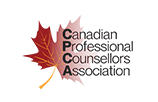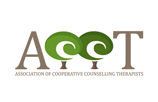
A professional wellness coach is tasked with providing instruction and activities to clients that promote physical, emotional, and mental wellness. In your career, you may encounter clients who experience self-defeating thoughts and behaviour patterns. Schemas refer to these unhelpful patterns that individuals may develop if their emotional needs aren’t met as a child (Raypole, 2019). If left unaddressed, these schemas can affect individuals throughout their whole life and incite problematic coping methods (Raypole, 2019).
In developing flawed ways of thinking or perceiving, people are at risk of unwanted mental health conditions, poor relationships, and instability in other areas of their life (Patterson, 2021). It’s the responsibility of a wellness coach to identify these schemas, examine their origins, and work with clients to develop a healthier mindset that will encourage a positive life experience. Read on to discover more about schema therapy and its benefits for clients today.
What Is Schema Therapy?
Schema therapy can be an effective method of conceptualizing and treating personality disorders (Psychology Tools, 2021). The theory is based on the belief that early maladaptive schemas form based on negative childhood experiences (Good Therapy, 2016). When emotional needs are unmet in childhood, individuals may find a loss in their ability to satisfy those needs later in life (Good Therapy, 2016). This can lead to feelings of worthlessness and self-doubt, unhealthy choices, and destructive behaviour patterns (Good Therapy, 2016). It’s the job of a professional counsellor after wellness college to help individuals make sense of these negative thought patterns and find ways to break them.
As an integrative approach, schema therapy combines elements of cognitive behavioural therapy, psychoanalysis, and attachment theory (Raypole, 2019). A professional counsellor may find that schema therapy is a useful solution for treating clients with borderline personality disorder or those who don’t always respond to alternative treatment options (Raypole, 2019).
Identifying Schemas and Coping Strategies
An essential step to schema therapy is identifying maladaptive schemas. By exploring the origins of a client’s unmet emotional needs, schema therapy can focus on building nurturing relationships and developing feelings of self-worth (Good Therapy, 2016). The schemas act as a filter that affects the way thoughts, behaviours, and situations are viewed (Patterson, 2021). When the schemas have a powerful presence, individuals struggle to see themselves and the world around them in objective and reasonable ways (Patterson, 2021).
There are 18 identified schema types fitting into a broad set of schema domains, each representing a core component of a person’s needs (Patterson, 2021). A counsellor employing schema therapy will work with the client to evaluate which schema types seem to be affecting the individual the most. After identifying the schemas, counsellors can work to lessen their impact on the client.
Schema therapy also pays particular attention to maladaptive coping styles that a person may be using (Woodall, 2021). Schemas are often managed in one of three ways: surrender, overcompensation, or avoidance (Woodall, 2021). Professionals with a wellness coach certification should understand the different coping methods and help clients to find healthy ways to change their thought patterns.

Professionals with a wellness coach certification should know the common coping strategies for schemas
How You Can Assist Clients After Wellness College
The aim of schema therapy is to identify schemas and coping strategies, and the best way to handle them in an individual’s given circumstances (Woodall, 2021). Circumstances change from childhood to adulthood, and professional counsellors should find ways to offer productive solutions that cater to their clients today. Schema therapy may cover discussions about childhood origins, coping styles, and ways to access different emotions in creative ways (Woodall, 2021).
Beyond understanding the past, schema therapy also entails more practical elements to instigate active change in the client’s life (Woodall, 2021). Counsellors may use cognitive, behavioural, and experiential techniques to complement the therapy (Woodall, 2021).
With an understanding of the origins and trends in maladaptive schemas, professionals can work with clients to promote positive patterns that will lead to a happier and healthier life experience.
Are you ready to earn your wellness coach diploma?
Contact Rhodes Wellness College for more information!
Works Cited:
Good Therapy (2016). Schema Therapy. Retrieved from https://www.goodtherapy.org/learn-about-therapy/types/schema-therapy
Patterson, E (2021). Schema Therapy: How It Works & What to Expect. Retrieved from https://www.choosingtherapy.com/schema-therapy/
Psychology Tools (2021). Schema Therapy. Retrieved from https://www.psychologytools.com/professional/therapies/schema-therapy/
Raypole, C (2019). How Schema Therapy Can Help You Undo Harmful Patterns. Retrieved from https://www.healthline.com/health/schema-therapy-2
Woodall, A (2021). A Client’s Guide to Schema Therapy. Retrieved from https://www.visionpsychology.com/a-clients-guide-to-schema-therapy/










